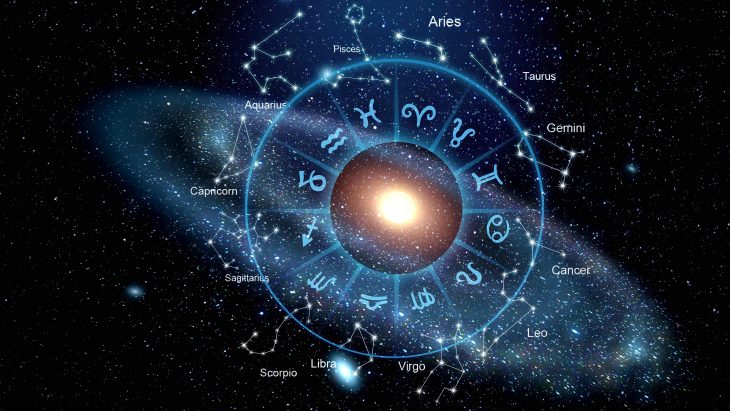
Astrology has captivated people for millennia, offering insights into personality, behavior, and life’s mysteries. Rooted in ancient traditions, the zodiac signs provide a fascinating lens through which to understand ourselves and others. This collection of 50 facts delves into the origins, characteristics, and influences of each zodiac sign, revealing how these celestial symbols shape our personalities and life paths. Whether you’re new to astrology or a seasoned enthusiast, these facts offer a deeper understanding of how the zodiac continues to play a significant role in guiding and reflecting our experiences in the modern world.
The Foundations of Zodiac Signs
1. The Origins of Zodiac Signs
Zodiac signs trace their roots back to ancient Babylonian astrology, originating around the 2nd millennium BCE. The Babylonians were among the first to divide the sky into twelve sections, each corresponding to a constellation. These constellations, later known as the zodiac signs, were believed to influence the personalities and destinies of individuals born under their alignment.
2. The Twelve Zodiac Signs
The zodiac is divided into twelve distinct signs, each associated with specific dates of the year. These signs include Aries, Taurus, Gemini, Cancer, Leo, Virgo, Libra, Scorpio, Sagittarius, Capricorn, Aquarius, and Pisces. Each sign carries unique traits and characteristics that are believed to influence individuals born under them.
Characteristics of the Zodiac Signs
3. Aries: The First Sign
Aries, symbolized by the Ram, is the first sign of the zodiac. Those born under Aries are known for their leadership abilities, high energy, and an innate drive to conquer challenges. Aries individuals are often seen as pioneers, always eager to take the lead and make their mark.
4. Taurus: The Bull
Taurus, represented by the Bull, is known for its strong connection to the material world. Taureans are practical, reliable, and have a deep appreciation for the finer things in life. They are often seen as stable and loyal, with a strong sense of perseverance.
5. Gemini: The Twins
Gemini, symbolized by the Twins, embodies duality and versatility. Geminis are known for their quick wit, adaptability, and sociable nature. They are often curious, enjoying a wide range of interests and the ability to see multiple sides of a situation.
6. Cancer: The Crab
Cancer, represented by the Crab, is deeply emotional and intuitive. Cancerians are known for their nurturing nature and strong connection to family and home. They are often empathetic, with a deep understanding of the feelings of others.
7. Leo: The Lion
Leo, symbolized by the Lion, is known for its confidence, creativity, and leadership qualities. Leos are often drawn to the spotlight and thrive on recognition and admiration. Their natural charisma makes them influential and inspiring leaders.
8. Virgo: The Maiden
Virgo, represented by the Maiden, is associated with attention to detail and practicality. Virgos are known for their analytical minds and a strong desire for order and perfection. They excel in tasks that require precision and careful planning.
9. Libra: The Scales
Libra, symbolized by the Scales, represents balance, harmony, and fairness. Libras are often diplomatic, striving to create peace and equilibrium in their relationships and surroundings. They have a strong sense of justice and are skilled at seeing multiple perspectives.
10. Scorpio: The Scorpion
Scorpio, represented by the Scorpion, is known for its intensity and depth. Scorpios are passionate, determined, and often possess a magnetic personality. They are driven by a desire to uncover the truth and explore the deeper aspects of life.
11. Sagittarius: The Archer
Sagittarius, symbolized by the Archer, is associated with adventure, exploration, and a love for freedom. Sagittarians are known for their optimism, independence, and a thirst for knowledge. They are always seeking new experiences and are often philosophical in their outlook on life.
12. Capricorn: The Goat
Capricorn, represented by the Goat, is known for its ambition, discipline, and practicality. Capricorns are hardworking, responsible, and often focused on achieving long-term goals. They have a strong sense of duty and are often seen as reliable and steadfast.
13. Aquarius: The Water Bearer
Aquarius, symbolized by the Water Bearer, is associated with innovation, independence, and humanitarianism. Aquarians are known for their forward-thinking mindset, often embracing new ideas and technologies. They are deeply concerned with social issues and are driven by a desire to make the world a better place.
14. Pisces: The Fish
Pisces, represented by the Fish, is known for its creativity, spirituality, and deep emotional sensitivity. Pisceans are compassionate, intuitive, and often have a strong connection to the arts and the mystical side of life. They are empathetic and often have a deep understanding of the human experience.
Astrological Elements and Qualities
15. Cardinal, Fixed, and Mutable Signs
The zodiac signs are divided into three qualities: Cardinal, Fixed, and Mutable. Cardinal signs (Aries, Cancer, Libra, Capricorn) are initiators, often taking the lead in new ventures. Fixed signs (Taurus, Leo, Scorpio, Aquarius) are known for their stability and determination, often seeing projects through to completion. Mutable signs (Gemini, Virgo, Sagittarius, Pisces) are adaptable and flexible, excelling in environments that require change and versatility.
16. The Four Elements: Fire, Earth, Air, and Water
Each zodiac sign is associated with one of the four elements: Fire, Earth, Air, and Water. These elements represent different energies and characteristics:
- Fire Signs (Aries, Leo, Sagittarius) are passionate, dynamic, and often act with enthusiasm and determination.
- Earth Signs (Taurus, Virgo, Capricorn) are grounded, practical, and focus on material and financial stability.
- Air Signs (Gemini, Libra, Aquarius) are intellectual, communicative, and enjoy engaging in deep conversations and exchanging ideas.
- Water Signs (Cancer, Scorpio, Pisces) are emotional, intuitive, and often have a strong connection to their inner world and the feelings of others.
The Role of Planets in Astrology
17. The Ruling Planets
Each zodiac sign is ruled by a planet that influences its traits and characteristics. For example, Mars rules Aries, endowing it with its bold, assertive nature. Similarly, Venus rules both Taurus and Libra, highlighting their connection to beauty, love, and harmony.
18. The Ascendant Sign
The Ascendant, or Rising Sign, represents the sign that was rising on the eastern horizon at the time of your birth. It influences your outward behavior, appearance, and how others perceive you. The Ascendant often plays a significant role in shaping your personality and how you present yourself to the world.
19. The Sun Sign
Your Sun sign represents your core personality and is determined by the position of the Sun at the time of your birth. It reflects your ego, identity, and basic nature. The Sun sign is often the most recognized aspect of your astrological profile.
20. The Moon Sign
Your Moon sign represents your emotional nature, instincts, and inner world. It is determined by the position of the Moon at the time of your birth. The Moon sign reveals how you deal with emotions, your deepest needs, and what makes you feel secure.
Astrological Houses and Their Influence
21. The Twelve Astrological Houses
The zodiac is divided into twelve houses, each representing different areas of life, such as relationships, career, and personal development. The placement of planets in these houses influences specific aspects of your life.
22. The First House: The Self
The First House is associated with the self, physical appearance, and personal identity. It is often linked to your Ascendant sign and plays a crucial role in defining how you present yourself to the world.
23. The Second House: Finances and Material Possessions
The Second House is related to finances, material possessions, and your attitude toward money. It influences your approach to wealth, security, and how you value material goods.
24. The Third House: Communication and Learning
The Third House is connected to communication, learning, and relationships with siblings. It influences how you express yourself, your intellectual pursuits, and your approach to education and information.
25. The Fourth House: Home and Family
The Fourth House represents home, family, and roots. It influences your domestic life, your connection to your heritage, and how you create a sense of security and belonging in your personal space.
26. The Fifth House: Creativity and Romance
The Fifth House is associated with creativity, romance, and children. It influences your artistic expression, your experiences of love and pleasure, and how you engage in leisure activities.
27. The Sixth House: Health and Work
The Sixth House is related to health, work, and daily routines. It influences your approach to wellness, your work ethic, and how you manage your day-to-day responsibilities.
28. The Seventh House: Partnerships
The Seventh House represents partnerships, both personal and professional. It influences your relationships, marriages, and how you connect and collaborate with others.
29. The Eighth House: Transformation and Shared Resources
The Eighth House is associated with transformation, sexuality, and shared resources. It influences how you deal with change, deep emotional experiences, and matters related to inheritance, taxes, and joint finances.
30. The Ninth House: Travel and Philosophy
The Ninth House is connected to travel, higher education, and philosophy. It influences your quest for knowledge, your interest in foreign cultures, and your approach to spiritual and philosophical matters.
31. The Tenth House: Career and Public Image
The Tenth House represents career, public image, and reputation. It influences your professional life, your ambitions, and how you are perceived by society. The placement of planets in this house can reveal your career path and your approach to achieving success.
32. The Eleventh House: Friendships and Social Groups
The Eleventh House is associated with friendships, social groups, and long-term goals. It influences your networking skills, your aspirations, and how you engage with your community and social circles.
33. The Twelfth House: The Subconscious and Spirituality
The Twelfth House is connected to the subconscious, dreams, and hidden aspects of life. It influences your spiritual journey, your connection to the unseen world, and how you deal with issues that are not immediately visible or conscious.
Astrological Phenomena and Concepts
34. The Cusp Signs
People born on the cusp of two zodiac signs may exhibit traits from both signs. For example, someone born on the cusp of Libra and Scorpio may have a blend of Libra’s diplomatic nature and Scorpio’s intensity. Cusp signs often find themselves balancing the characteristics of two different astrological influences.
35. The Lunar Nodes
The Lunar Nodes, known as the North Node and South Node, represent your karmic path and soul’s journey. The North Node indicates the direction you should move towards in this life, representing the lessons you need to learn. The South Node, on the other hand, represents past experiences and talents that you bring into this life but may need to move beyond.
36. Retrograde Planets
When a planet is in retrograde, it appears to move backward in the sky from our perspective on Earth. This phenomenon is often associated with challenges, delays, and a time to reflect and reassess certain aspects of life. Retrograde periods can bring up unresolved issues that need to be addressed.
37. Mercury Retrograde
Mercury retrograde is one of the most well-known astrological events. During this period, communication, travel, and technology can face disruptions, leading many to believe it is a time of miscommunication and delays. People often use this time to slow down and revisit projects or ideas that need fine-tuning.
38. Birth Charts
A birth chart, or natal chart, is a map of the sky at the exact moment of your birth. It provides a detailed overview of your personality, strengths, challenges, and life path. A birth chart includes the positions of the Sun, Moon, planets, and astrological houses, offering a comprehensive snapshot of your astrological makeup.
39. The Great Conjunction
The Great Conjunction occurs when Jupiter and Saturn align in the sky. This rare event is often seen as a time of significant change, new beginnings, and the merging of different energies. The Great Conjunction is believed to influence both personal and collective shifts, marking important moments in history and society.
40. The Age of Aquarius
The Age of Aquarius is a concept in astrology that suggests a new era of enlightenment, innovation, and humanitarianism. It is believed to bring about significant shifts in global consciousness, with a focus on community, technology, and social progress. The Age of Aquarius is often associated with a move towards greater equality and the breaking down of old structures.
Astrology in Modern Life
41. Astrology and Personality Types
Astrology is often used to understand different personality types. Each zodiac sign has unique traits that can help individuals understand themselves and others better. By exploring the characteristics of each sign, people can gain insights into their behavior, motivations, and relationships.
42. The Influence of Astrology Today
Astrology continues to be a popular tool for self-reflection and understanding the world. While its origins are ancient, its relevance remains strong in modern times, with many people turning to their zodiac signs for guidance in various aspects of life. Astrology is often used in daily horoscopes, relationship advice, and personal development.
Zodiac Signs and Relationships
43. Compatibility Between Signs
Zodiac signs are often used to determine compatibility in relationships. Signs of the same element (e.g., Fire signs with other Fire signs) are usually considered more compatible. However, opposite signs (e.g., Aries and Libra) can also create a dynamic and complementary partnership.
44. Opposite Signs
Each zodiac sign has an opposite sign that is six months apart in the calendar. These opposite signs (e.g., Taurus and Scorpio, Gemini and Sagittarius) often have complementary traits that can create a balanced relationship. Opposites can attract, bringing different strengths and perspectives to the partnership.
45. Synastry: The Astrology of Relationships
Synastry is the study of how different birth charts interact in a relationship. By comparing the positions of planets and houses in two people’s charts, astrologers can gain insights into the dynamics of the relationship, including areas of harmony and potential challenges.
Astrology Beyond the Zodiac
46. Astrological Events and Eclipses
Astrological events, such as solar and lunar eclipses, are often seen as powerful moments of change and transformation. Eclipses can bring sudden insights, endings, and new beginnings. They are often used as markers for important life events and turning points.
47. The Role of Fixed Stars in Astrology
In addition to the planets and zodiac signs, fixed stars also play a role in astrology. These stars, which remain in relatively fixed positions in the sky, are believed to influence specific traits and events. Astrologers use fixed stars to add depth and nuance to birth charts and predictions.
48. Astrology and the Moon Phases
The phases of the Moon—new moon, first quarter, full moon, and last quarter—are believed to influence emotions, behavior, and decision-making. For example, the new moon is often associated with new beginnings and setting intentions, while the full moon is seen as a time of culmination and heightened emotions.
49. Astrology and Numerology
Astrology and numerology are often used together to gain deeper insights into a person’s life and destiny. Numerology assigns meaning to numbers based on a person’s birthdate and name, while astrology uses the positions of planets and signs. Together, these disciplines offer a holistic view of an individual’s personality and life path.
50. The Evolution of Astrology
Astrology has evolved over thousands of years, adapting to different cultures and belief systems. From its origins in ancient Babylon to its modern-day practice, astrology has remained a powerful tool for understanding the self and the universe. Despite advances in science and technology, astrology continues to be a source of guidance, reflection, and inspiration for many people around the world.
Final Word
Astrology remains a powerful tool for self-discovery and understanding the world around us. From ancient Babylon to modern times, its influence has persisted, offering insights into personality, relationships, and life events. Whether you’re exploring your zodiac sign, examining compatibility, or considering the impact of astrological events, these facts highlight the enduring relevance of astrology. It continues to be a source of guidance, reflection, and inspiration for many, helping people navigate life’s challenges and celebrate its joys with a deeper sense of connection to the universe and themselves.
Was this page helpful?
Our commitment to delivering trustworthy and engaging content is at the heart of what we do. Each fact on our site is contributed by real users like you, bringing a wealth of diverse insights and information. To ensure the highest standards of accuracy and reliability, our dedicated editors meticulously review each submission. This process guarantees that the facts we share are not only fascinating but also credible. Trust in our commitment to quality and authenticity as you explore and learn with us.


